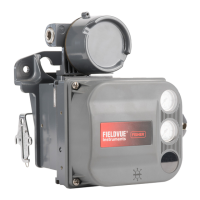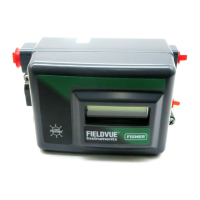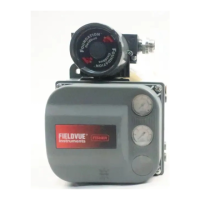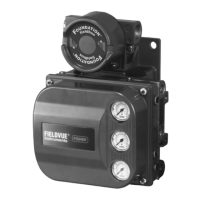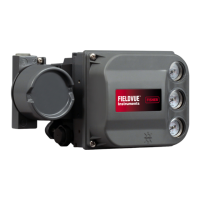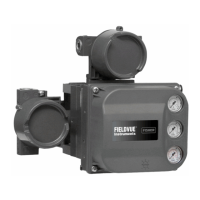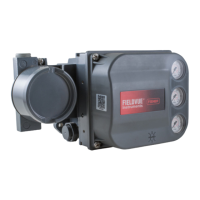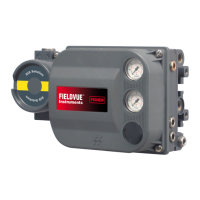Instruction Manual
D102748X012
DLC3010 Digital Level Controller
Configuration
May 2018
67
Two Point: The Two Point Calibration requires you to set up two different process conditions with as much difference
as possible. You could use two standard fluids with well‐known density and alternately submerge the displacer in one
or the other. If you are going to try to simulate a fluid by using a certain amount of water, remember that the amount
of displacer covered by the water is what counts, not the amount in the cage. The amount in the cage will always need
to be slightly more because of the displacer motion. If successful, the computed torque rate and zero reference angle
are displayed for reference.
Weight Based: The Weight Calibration asks you for the lowest and highest density you want to use for the calibration
points, and computes weight values for you. If you can't come up with the exact values asked for, you are allowed to
edit the values to tell it what weights you actually used. If successful, the computed torque rate and zero reference
angle are displayed for reference.
Sensor Calibration at Process Conditions (Hot Cut‐Over) when input cannot be varied
If the input to the sensor cannot be varied for calibration, you can configure the instrument gain using theoretical
information and use Trim Zero to trim the output to the current process condition. This allows you to make the
controller operational and to control a level around a setpoint. You can then use comparisons of input changes to
output changes over time to refine the gain estimate. A new trim zero will be required after each gain adjustment. This
approach is not recommended for a safety‐related application, where exact knowledge of the level is important to
prevent an overflow or dry sump condition. However, it should be more than adequate for the average level‐control
application that can tolerate large excursions from a midspan set point.
There are a number of calibration methods available in the DLC3010 Device Description. Two Point Calibration allows
you to calibrate the torque tube using two input conditions that put the measured interface anywhere on the
displacer. The accuracy of the method increases as the two points are moved farther apart, but if the level can be
adjusted up or down a minimum 5% span, it is enough to make a calculation. Most level processes can accept a small,
manual adjustment of this nature. If your process cannot, then the theoretical approach is the only method available.
1. Determine all the information you can about the 249 hardware: 249 type, mounting sense (controller to the right or
left of displacer), torque tube material and wall thickness, displacer volume, weight, length, and driver rod length.
(the driver rod length is not the suspension rod length, but the horizontal distance between the centerline of the
displacer and the centerline of the torque tube). Also obtain process information: fluid densities, process
temperature, and pressure. (The pressure is used as a reminder to consider the density of an upper vapor phase,
which can become significant at higher pressures.)
2. Run Instrument Setup and enter the various data that is requested as accurately as possible In Manual Setup. Set
the Range Values (LRV, URV) to the PV values where you will want to see 4 mA and 20 mA output, respectively.
These might be 0 and 14 inches on a 14 inch displacer.
3. Mount and couple at the current process condition. Do not run the Capture Zero procedure, because it will not be
accurate.
4. With the torque tube type and material information, find a theoretical value for the composite or effective
torque-tube rate, (Refer to the Entering Theoretical Torque Tube (TT) Rates procedure in this section), and enter it
in the instrument memory. The value can be accessed by selecting:
Configure > Manual Setup > Sensor > Torque Tube > Change Torque Rate (2-2-1-3-5)
If you select Find default from nameplate data instead of Edit, the procedure can look up values for commonly
available torque tubes.
5. If the process temperature departs significantly from room temperature, use a correction factor interpolated from
tables of theoretical normalized modulus of rigidity. Multiply the theoretical rate by the correction factor before
entering the data. You should now have the gain correct to within perhaps 10%, at least for the standard wall, short
length torque tubes. (For the longer torque tubes (249K, L, N) with thin‐wall and a heat insulator extension, the
theoretical values are much less accurate, as the mechanical path departs considerably from the linear theory.)
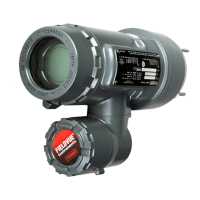
